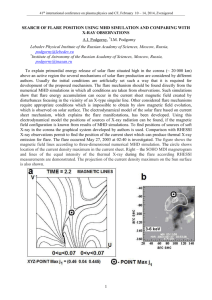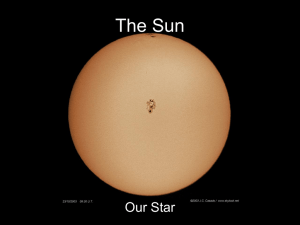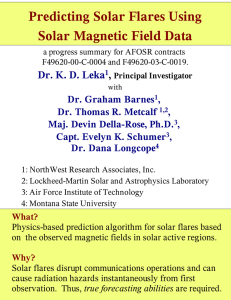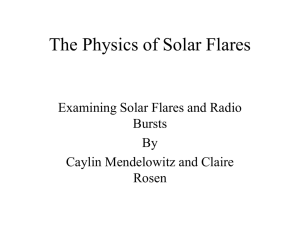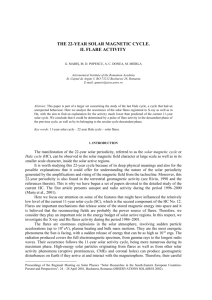PHYSICS OF SOLAR FLARES
advertisement
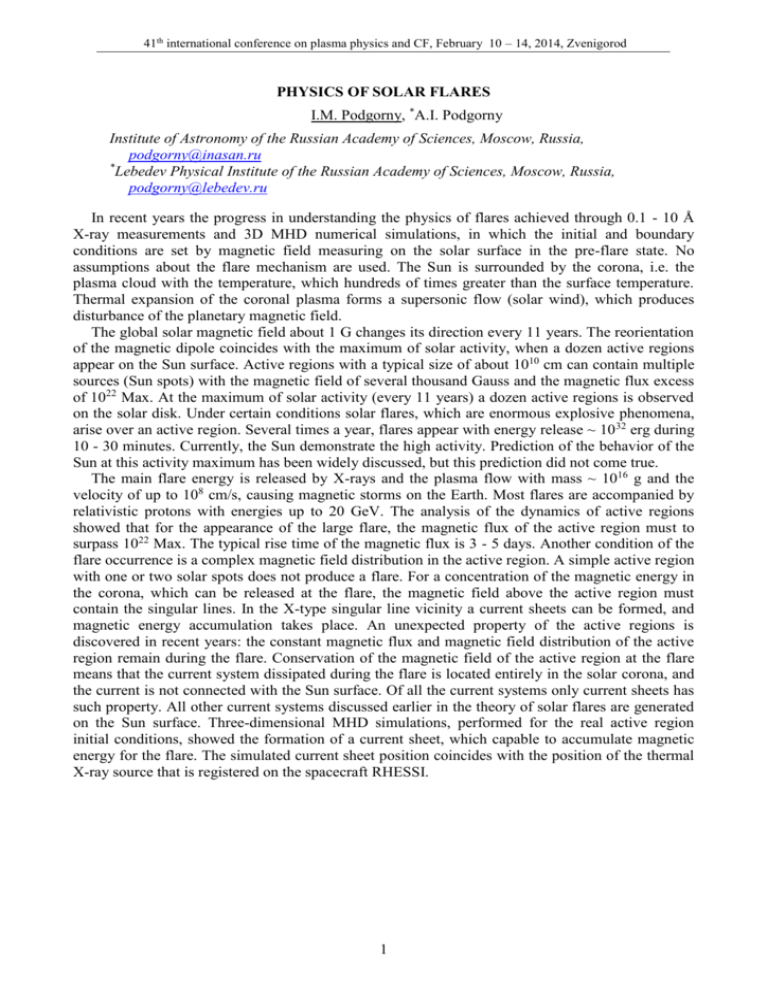
41th international conference on plasma physics and CF, February 10 – 14, 2014, Zvenigorod PHYSICS OF SOLAR FLARES I.M. Podgorny, *A.I. Podgorny Institute of Astronomy of the Russian Academy of Sciences, Moscow, Russia, podgorny@inasan.ru * Lebedev Physical Institute of the Russian Academy of Sciences, Moscow, Russia, podgorny@lebedev.ru In recent years the progress in understanding the physics of flares achieved through 0.1 - 10 Å X-ray measurements and 3D MHD numerical simulations, in which the initial and boundary conditions are set by magnetic field measuring on the solar surface in the pre-flare state. No assumptions about the flare mechanism are used. The Sun is surrounded by the corona, i.e. the plasma cloud with the temperature, which hundreds of times greater than the surface temperature. Thermal expansion of the coronal plasma forms a supersonic flow (solar wind), which produces disturbance of the planetary magnetic field. The global solar magnetic field about 1 G changes its direction every 11 years. The reorientation of the magnetic dipole coincides with the maximum of solar activity, when a dozen active regions appear on the Sun surface. Active regions with a typical size of about 1010 cm can contain multiple sources (Sun spots) with the magnetic field of several thousand Gauss and the magnetic flux excess of 1022 Max. At the maximum of solar activity (every 11 years) a dozen active regions is observed on the solar disk. Under certain conditions solar flares, which are enormous explosive phenomena, arise over an active region. Several times a year, flares appear with energy release ~ 10 32 erg during 10 - 30 minutes. Currently, the Sun demonstrate the high activity. Prediction of the behavior of the Sun at this activity maximum has been widely discussed, but this prediction did not come true. The main flare energy is released by X-rays and the plasma flow with mass ~ 1016 g and the velocity of up to 108 cm/s, causing magnetic storms on the Earth. Most flares are accompanied by relativistic protons with energies up to 20 GeV. The analysis of the dynamics of active regions showed that for the appearance of the large flare, the magnetic flux of the active region must to surpass 1022 Max. The typical rise time of the magnetic flux is 3 - 5 days. Another condition of the flare occurrence is a complex magnetic field distribution in the active region. A simple active region with one or two solar spots does not produce a flare. For a concentration of the magnetic energy in the corona, which can be released at the flare, the magnetic field above the active region must contain the singular lines. In the X-type singular line vicinity a current sheets can be formed, and magnetic energy accumulation takes place. An unexpected property of the active regions is discovered in recent years: the constant magnetic flux and magnetic field distribution of the active region remain during the flare. Conservation of the magnetic field of the active region at the flare means that the current system dissipated during the flare is located entirely in the solar corona, and the current is not connected with the Sun surface. Of all the current systems only current sheets has such property. All other current systems discussed earlier in the theory of solar flares are generated on the Sun surface. Three-dimensional MHD simulations, performed for the real active region initial conditions, showed the formation of a current sheet, which capable to accumulate magnetic energy for the flare. The simulated current sheet position coincides with the position of the thermal X-ray source that is registered on the spacecraft RHESSI. 1
